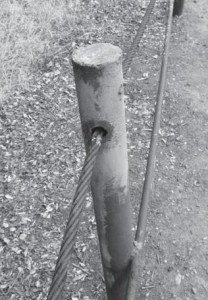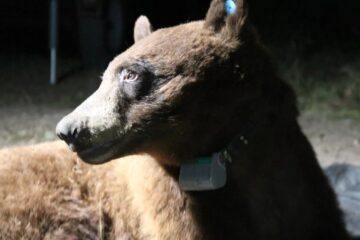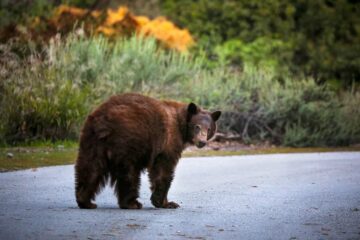Hollow posts double as death traps
Conejo Open Space Conservation Agency rangers are saving wildlife one pipe at time, and the Conejo Valley Audubon Society applauds them.
Source of this article: The Thousand Oaks Acorn, June 18, 2015
What do wildlife traps and open-topped vertical pipes have in common? Both are death traps for birds, lizards and other small animals.
Staff from Audubon California disassembled a 20-foottall ventilation pipe from an abandoned irrigation system in 2009. What they found inside was horrendous—a 7-foot-long black mass composed entirely of the carcasses of hundreds of dead birds and other animals filled the pipe.
This grotesque accumulation spanned 50 years based on the date stamped in the concrete at the base of the pipe. Bluebirds, northern flickers, American kestrels and western fence lizards were among the dead.

HOW TO SAVE A LIFE—Open-topped vertical posts are deathly hazards to birds, reptiles and small animals, who, cannot escape once inside. Prevention is easy by capping with newspaper and concrete.
Trapped birds go mostly unnoticed as they lay dying from dehydration and starvation inside hollow poles, sewer systems, septic tanks and other places. They inadvertently get stuck as a result of seeking out hiding places or nesting areas or for simply being curious.
It does not make a difference if the pipes are 1 or 10 inches wide, nor does the pipe material matter. There is not enough room for them to spread their wings to fly. They cannot climb out because the pipes are too smooth inside.
Wildlife mortalities from entrapment in hollow posts, vents and other pipes have been well documented worldwide, and yet there is an easy antidote: The hollow posts can be capped with manufactured covers, hardware cloth or cement.
Because of the large number of open-topped vertical posts in Thousand Oaks’ Wildwood Park and open-space areas throughout the Conejo Recreation and Park District, the Conejo Valley Audubon Society approached CRPD Superintendent Matt Kouba to take action.
 “While we don’t have the staff to immediately cap every pole, we can cap about six or so at a time as rangers go about their regular patrols,” Kouba said. “The rangers are inventorying locations where there are vertical pipes that need to be capped throughout the park district.”
“While we don’t have the staff to immediately cap every pole, we can cap about six or so at a time as rangers go about their regular patrols,” Kouba said. “The rangers are inventorying locations where there are vertical pipes that need to be capped throughout the park district.”
COSCA ranger Kari Stav is coordinating the effort. Earlier this month, she and ranger Jane Fawke, better known as “Ranger Spider,” kicked off the conservation mission at the Los Robles Open Space. Armed with water, gloves, lots of newspaper, duct tape and concrete powder, they plugged the open tops of 60 vertical hollow posts along the Whole Access Trail at the end of Greenmeadow Avenue. This was the first of many COSCA and CRPD areas to be addressed.
Do you have uncapped, hollow vertical poles or vents on your property? You, too, can prevent wildlife deaths by taking action.
Hollow pipes can be found in a variety of locations, used as fence posts, survey markers, garden stakes, etc. If you’re unable to get manufactured caps for them, you can easily make your own.
Stuff paper a few inches down into the open vertical pipe, pour concrete over it and let it set. The COSCA rangers first made a ducttape saddle to better secure the paper before pouring the concrete.
Unlike vertical posts, vents on buildings and utilities will not remain functional if they are plugged.
Hardware cloth or screening will block open vertical vents if a manufactured cap is not available.
If you need help finding a solution to seal open vertical poles on your property, you can contact Conejo Valley Audubon Society for assistance.
Please report exposed vertical pipes or vents in public areas. Include a road or trail name and the closest address or trail/road cross-section.
A digital photograph and a GPS coordinate would be helpful. Email the information to vice- president@conejovalleyaudubon.org and society members will work with agencies or landowners to resolve the issue.



0 Comments